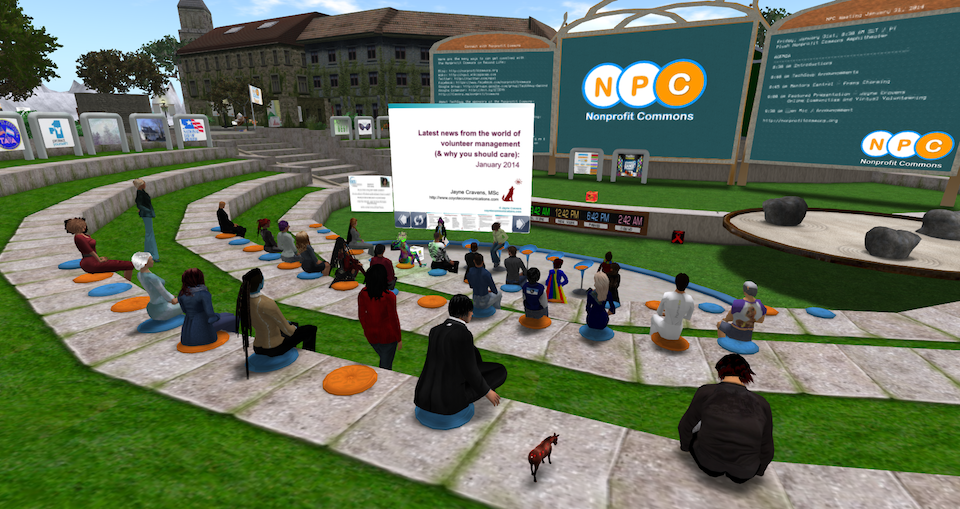In November 2021, I wrote a blog that warned nonprofits, NGOs, community groups, etc. not to over-invest in one social media tool – specifically Facebook. I wrote that blog because, when Facebook went offline in October of that year for about six hours, many organizations panicked: Facebook was their primary, even only, way of sharing up-to-date information with clients, volunteers and the general public – the organizations had either abandoned their own web sites and weren’t updating such much anymore and they used no other social media tools. That blog was a companion to another I’d written in 2019 exploring whether or not nonprofits should delete their Facebook accounts per Facebook’s reprehensible data mining, selling of data and unfettered spreading of misinformation and hate speech.
With the news that an extremely rich man who spreads medical misinformation, eschews philanthropy and efforts to address poverty and inequity, doesn’t treat his factory workers well, etc., has bought Twitter and will make it a “free speech” zone, removing its current community standards and probably restoring suspended accounts, many are thinking of deleting their personal or company Twitter accounts. And many folks are reeling from losing Twitter as we know it now, because they rely hugely on Twitter to get the word out about their work, to engage with others doing similar work, to network for jobs, etc. I am one of those people: while Facebook has been relatively useless for me professionally, Twitter has helped me sell my book, gotten me consulting gigs, gotten me invitations to speak at conferences and introduced me to so many amazing people I now call professional colleagues. It’s been more helpful to me professionally than any onsite, traditional conference I have ever attended in terms of networking, job leads and professional development. It’s been way more fun than Facebook personally as well: I have loved the social media challenges among museums on Twitter, the spontaneous poetry-writing events, and more very fun trending topics than I can count.
What to do regarding the Twitter dilemma? To stay could be seen as supporting the new owner, something that makes me very uncomfortable – and I’m not alone in that sentiment. And the reality is that, if he follows through on his plans, Twitter just isn’t going to be of value to me anymore.
Here’s what I’m doing in response to the potential changes at Twitter:
- I acknowledge that, right now, stopping my participation on Twitter would be disastrous for me professionally. While Facebook has been largely useless for me professionally, Twitter has been a hugely important tool, for the reasons I’ve already stated, so I’m going to continue to try to squeeze some benefit from it until the changes come.
- If Twitter goes in the direction that everyone is predicting – longer messages, adding suspended accounts back onto the platform (accounts that have spread misinformation, harassed people, etc.), not having rules about content, being a complete “free speech” zone, etc. – I’ll have to stop participating. I’m not sure if I will delete my Twitter account or just freeze it (just a last post to say where to find me).
- Over the last three years, I’ve been investing more time in my YouTube channel and Reddit, as well as following my own advice and making sure my web site is always up-to-date, so that no one social media is my only outlet. I’m active on several LinkedIn groups as well, like the virtual volunteering group (which I own, actually) and ALIVE (a national group for managers of volunteers). You can follow me on LinkedIn (but note that I link only to those that I know professionally, that I could say something about you and your work) and join me on any of those groups. So, I’m already diversified, and will continue to do so, and hope that one of those platforms, at last, proves even half as valuable to me as Twitter has.
- I’m always exploring other social media platforms. However, so far, the audience I want to reach professionally isn’t on TikTok, SnapChat, Instagram, etc. I’m on Signal, WhatsApp and Telegram, but I use those mostly for one-to-one communications, especially with folks overseas – the one group I’m on, for a nonprofit I volunteer for, is overwhelming and I’m not at all liking it. MeWe has never caught on with my colleagues (but you are welcomed to friend/follow me there).
- I have a blog, which you are reading now. That blog is on my own web site, not on someone else’s web site. Twitter has been the primary of driver of readers to this blog (I post to Facebook and LinkedIn too, but those bring very little traffic to my blog). I’ll need to look for new ways to drive subscribers. Before you recommend RSS feeds – I would say 90% of the people that are my professional audience have no idea what that is.
- I have a barely-used email distribution list (it died when I had to move it from YahooGroups because that platform went away) and a barely-used Google Group. I’ll be exploring how to leverage those better, but I’m not holding out much hope.
- I’m redoubling efforts to make sure anyone who visits me on any online platform knows where else to find me. This blog is one part of that effort. I’ve put in links to all of my other sites on social media – please subscribe / follow / and like if you are there too.
I’ll be watching what the people that I follow on Twitter do, as well as the people and organizations on each of my many wonderful, informative Twitter lists do, as far as posting about their work other than Twitter. I rely on my Twitter lists more than anything else to know who is doing what in my professional worlds – I have yet to find anything that even comes close to a substitution for that (I’m NOT gonig to subscribe to hundreds of email newsletters!).
What about going back to traditional avenues for networking and outreach: writing one-to-one emails, attending onsite conferences, buying advertising, etc. I don’t have the financial resources to attend onsite conferences, and as I’ve mentioned earlier, attendance has rarely lead to a book sale or a new gig. I don’t have the financial resources to buy advertising – and quite honestly, I can’t figure out Google Ads. As for email, I barely read email I receive – I know that what I send also often doesn’t get read (if it makes it past a spam filter).
Am I disappointed about Twitter? Hugely. If the changes that the new owner has threatened do come to fruition, I am going to lose one of the most effective and easy-to-use outreach tools in my toolbox, and I’m going to lose touch with so many, many people and organizations whose viewpoints and resources I value in my work.
This tweet is very representative of how many of us feel about the potential of losing Twitter as we know it, from Lainey Feingold / @LFLegal:
News about the Twitter sale is hitting me hard. What’s going to happen to #a11y and #DisabilityTwitter communities? Or the committed team at @TwitterA11y? I always say accessibility is global and some of that is because of this platform. Plus @twitter pals and chats Cheer me up!
But I’ve been here before:
- Back in the early part of the new millennium, when USENET newsgroups started becoming overwhelmed with off-topic advertising messages. Soc.org.nonprofit was an incredibly important outreach tool for me for almost a decade, and ALL of my professional successes since 1994 can be traced back to my participation in that online community. I hated losing it. In some ways, I feel like Twitter was a return to those wonderful, well-connected days.
- At about the same time, people started abandoning YahooGroups, which was a huge blow to many professionally-focused online communities like associations of managers of volunteers in particular: CYBERVPM, UKVPMs and OzVPM. I lost touch with many people altogether, people I’d known for years. And as I mentioned earlier, I had to move my email newsletter distribution group as a result and most of those folks did not follow me to the new platform.
I’ve been on America Online, MySpace, GooglePlus and GoogleWave – those are all gone, at least in the form I used them. I left each of those because something better came along. I should be used to this situation by now… but I also have to say that, other than YahooGroups, no platform has ever been the powerhouse for my professional work that Twitter has been. And nothing better seems to be coming along.
So, this is yet another cautionary tale about over-relying on a social media platform. While you cannot use everything out there, you absolutely need to use a diversity of outreach tools. And remember: there are people who are going to interact online with your initiative only via Facebook, or only via Twitter, or even only via email. None of those audiences are more important than another for your nonprofit, NGO, etc. Make sure all of your clients, volunteers, donors and others are reminded regularly of all of your various online communications channels, including your online communities – and your web address!
What are you or what is your organization doing about impending changes at Twitter? Please share in the comments below.
May 3 update: A tweet worth sharing:


If you have benefited from this blog, my other blogs, or other parts of my web site and would like to support the time that went into researching information, developing material, preparing articles, updating pages, etc. (I receive no funding for this work), here is how you can help.












